Art & Exhibitions
‘An Easy Way to Tell Difficult Stories’: Quilt Artist Carolyn Mazloomi on a Lifetime of Weaving Narratives
The 76-year-old artist has just opened her first New York gallery show.
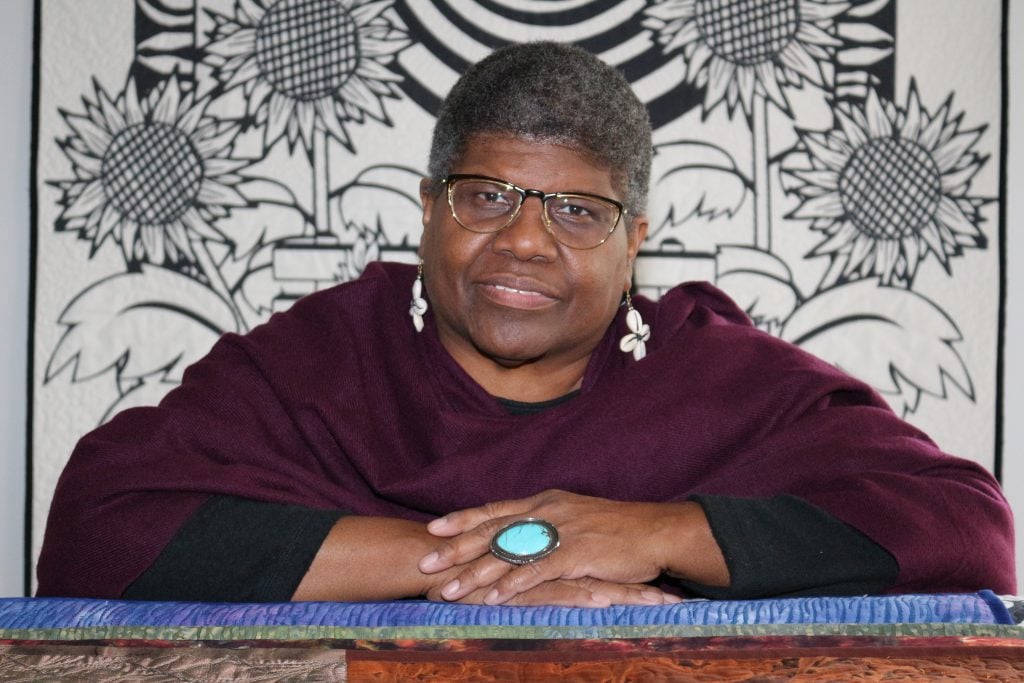
The 76-year-old artist has just opened her first New York gallery show.

Sarah Cascone

If the African American tradition of quilting has begun to find its place in the contemporary art world, it’s thanks in no small part to Carolyn Mazloomi, a self-taught quilter who has been a champion of the medium for over 55 years.
Since founding the Women of Color Quilters Network in 1985, Mazloomi has worked tirelessly to promote other Black women making quilts, curating exhibitions of their work at no less than 35 museums and publishing 15 books. A strong sense of ethics precluded her from ever including her own quilts—although they’ve been shown over the years in 35 institutions, largely at universities and museums dedicated to textiles, craft, or folk art.
But now, at age 76, Mazloomi is entering a new phase of her career. She just opened her first commercial gallery show, at Claire Oliver Gallery in Harlem.
“When I first got involved in quilt-making, it was as a maker,” the artist told me on a video call, “and I want to end my career as a maker, because quilts are my first love.”
Mazloomi met Claire Oliver about seven years ago, while the dealer was representing Bisa Butler, the African American artist who has become well-known for her vibrantly colorful quilted portraits. When Butler first began quilting, it was Mazloomi who served as a mentor, helping teach her the medium.

Carolyn Mazloomi, Ruby’s Courage. Photo courtesy of Claire Oliver Gallery, New York.
For years, the Oliver and Mazloomi kept their conversations about other artists who the quilting expert would recommend the dealer check out.
“She’s so humble. Carolyn never talked about her own work,” Oliver told me during a walkthrough of the show. “She would always be like, ‘oh, you need to see this artist or that artist.'”
But while the gallerist was helping younger Black women artists specializing in textile-based work like Butler and Gio Swaby become critical and commercial darlings, Mazloomi was continuing the work she been making for decades.
Her quilts are both tools for social justice and celebrations of the African American story, depicting famous figures such as Ruby Bridges, John Lewis, James Baldwin, and Billie Holiday, as well as telling less familiar stories, like that of Harriet Powers, the first documented African American quilter.
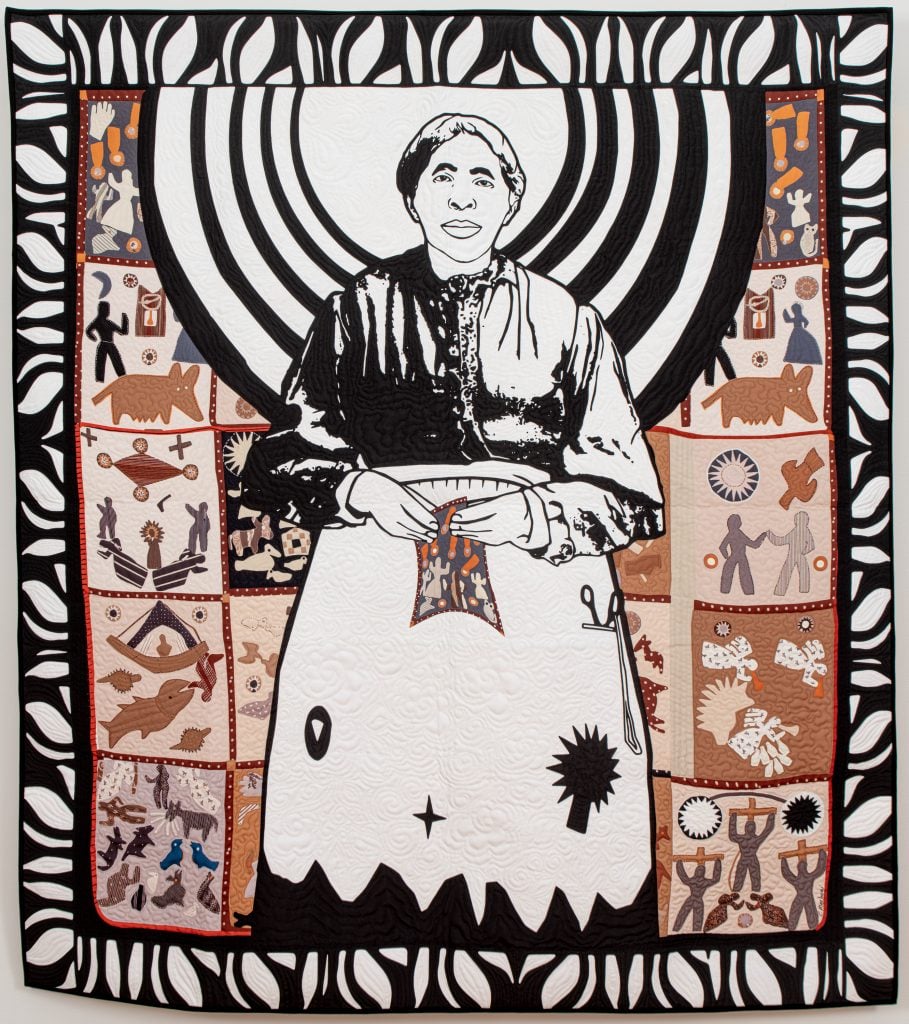
Carolyn Mazloomi, Mother of African Quilting. Photo courtesy of Claire Oliver Gallery, New York.
“I think it’s really important now more than ever. At this point in our country, we have over 30 states that have legislated laws restricting the teaching of Black history,” Mazloomi said. “My quilts are visual, historic documents to tell our story, because it’s becoming increasingly difficult [to do so].”
The artist hopes her quilts can help inspire social change, and raise awareness about systemic racism and the role it has played in U.S. history, through to the present day.
“When most people they see quilts, they think about heart and home and warmth and security,” Mazloomi added. “We all as human beings have a relationship with the cloth. It is the first thing we’re swathed in at birth. It’s the last thing that touches our body upon our death. So in telling these stories about civil rights and race relations in this country, the use of quilts is an easy fix. It’s a soft landing. Because people are familiar with cloth, it’s an easy way to tell very difficult stories.”
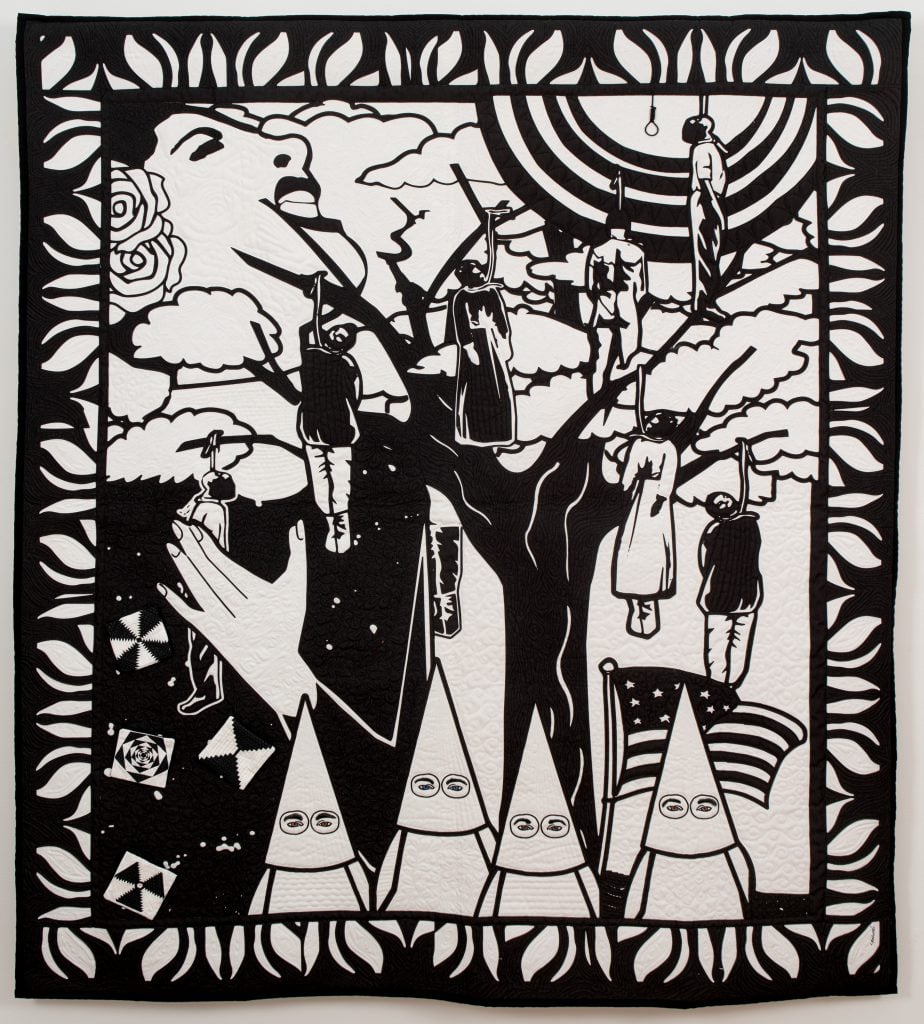
Carolyn Mazloomi, Strange Fruit #3. Photo courtesy of Claire Oliver Gallery, New York.
Even before the show’s official opening reception, the largely black-and-white quilts were drawing in passersby from the streets of Harlem.
“Everybody just walking down the street, getting a coffee, eating, going to the bus stop, everybody stops and looks in,” Oliver said, noting that she was constantly having to clean the front windows where people were pressing up against the glass to get a better look.
Visitors are so eager to learn the stories behind each quilt that the gallery has put together a guide to the works, offering biographies for the subjects. Those also include civil rights activist and investigative journalist Ida B. Wells, and Henrietta Lacks, a Black woman whose cancer cells became—without her consent—the first immortalized human cell line, used to this day in biomedical research.
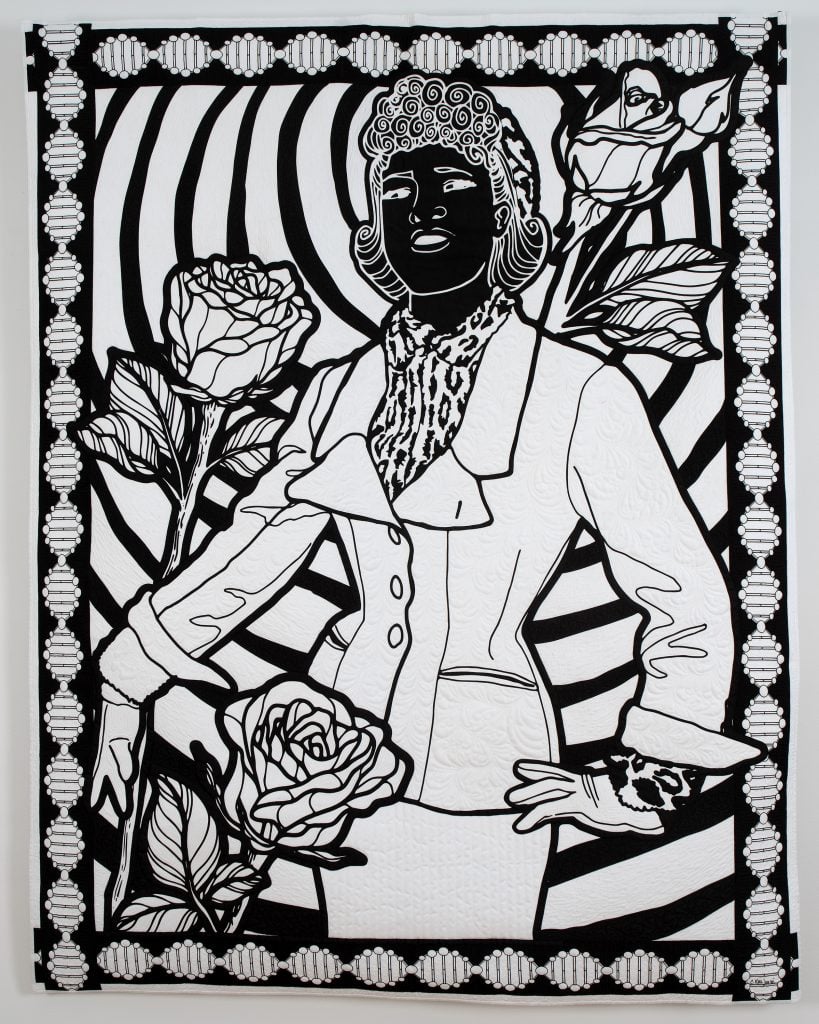
Carolyn Mazloomi, The Immortal Legacy of Henrietta Lacks. Photo courtesy of Claire Oliver Gallery, New York.
And collectors are responding too—Oliver told me that she has sold many of the works, priced at $65,000 to $95,000, to museums.
Mazloomi’s bold, graphic designs are based largely on photographs, and are reminiscent of woodblock prints. In the background, she often incorporates more traditional quilting patterns into her narrative scenes.
Before she was a quilter, Mazloomi, who grew up in Baton Rouge, was an aerospace engineer. She was a young mother living in Los Angeles when she caught the quilting bug after seeing a book about narrative art quilts while on a business trip to Dallas. Back home, she bought a how-to book and set about teaching herself.
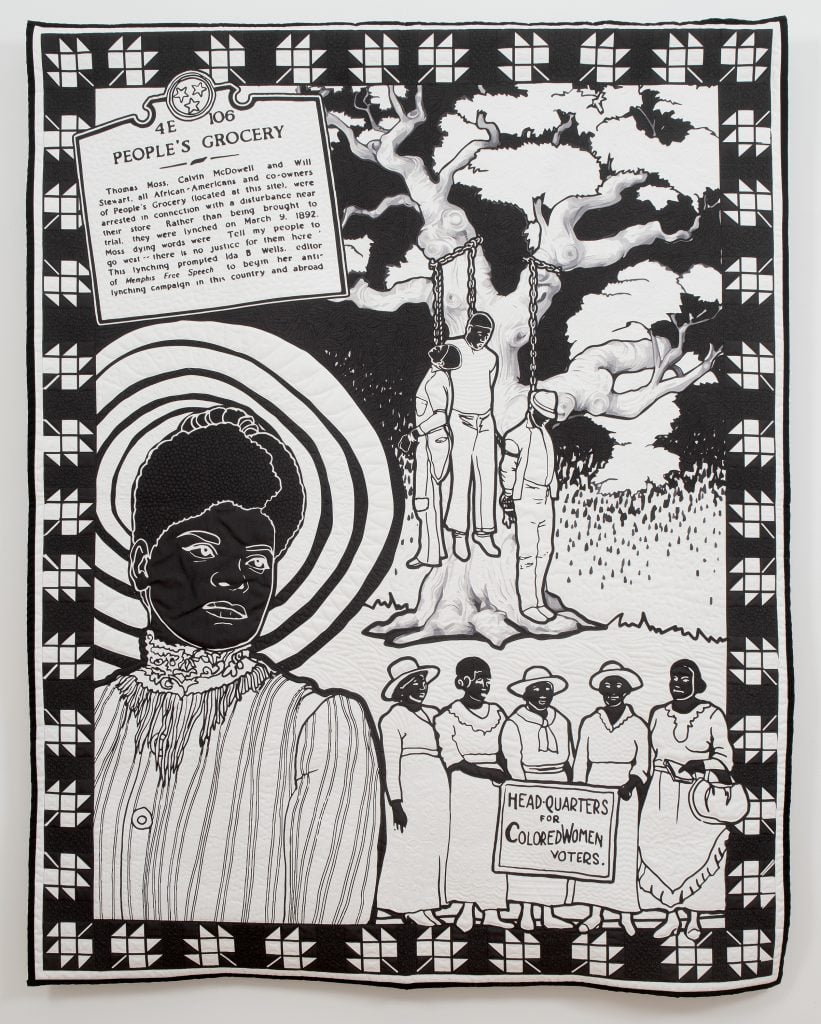
Carolyn Mazloomi, Ida B. Wells: A Crusader for Justice. Photo courtesy of Claire Oliver Gallery, New York.
Mazloomi still has her very first quilt, made using First Aid cotton when she couldn’t find cotton batting for filling.
“I kept going back to the drug store,” she recalled. “One day I was getting a batch of this cotton and the pharmacist came out and he says, ‘lady, I don’t know who’s sick in your home, but I think you need to get them to the hospital.'”
The first aid supply turned out not to be a good substitute, as the quilt did not survive its first trip through the dryer.
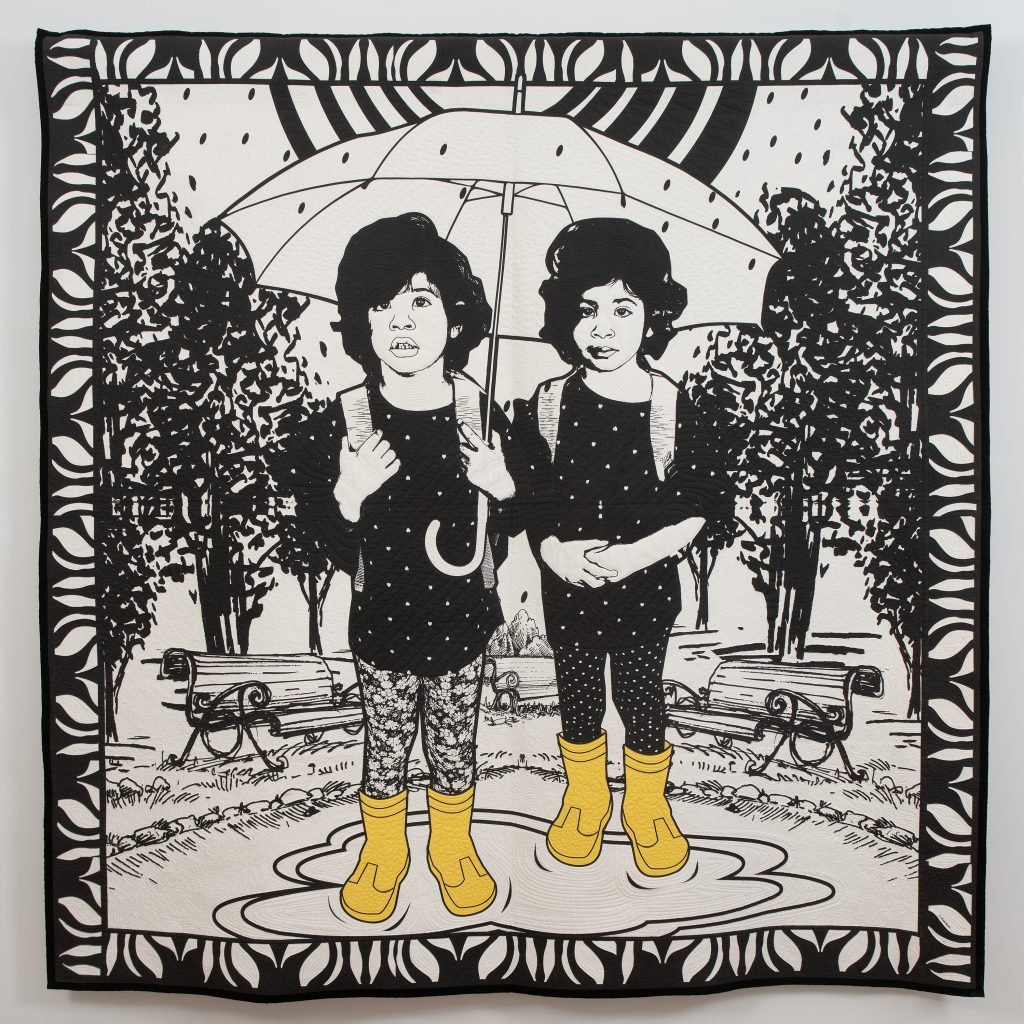
Carolyn Mazloomi, Rainy Day Twins in the Time of Covid. Photo courtesy of Claire Oliver Gallery, New York.
“My sons often tease me about that quilt. They say I have to pay them not to show it to anybody,” Mazloomi admitted. “It looks like a fried egg. The middle of it shrunk in all kinds of weird places.”
Founding the Women of Color Quilters Network was a way to learn more about quilting, and to help build a new quilting community, in the tradition of Gee’s Bend, Alabama, and other historic groups of African American women quilters.
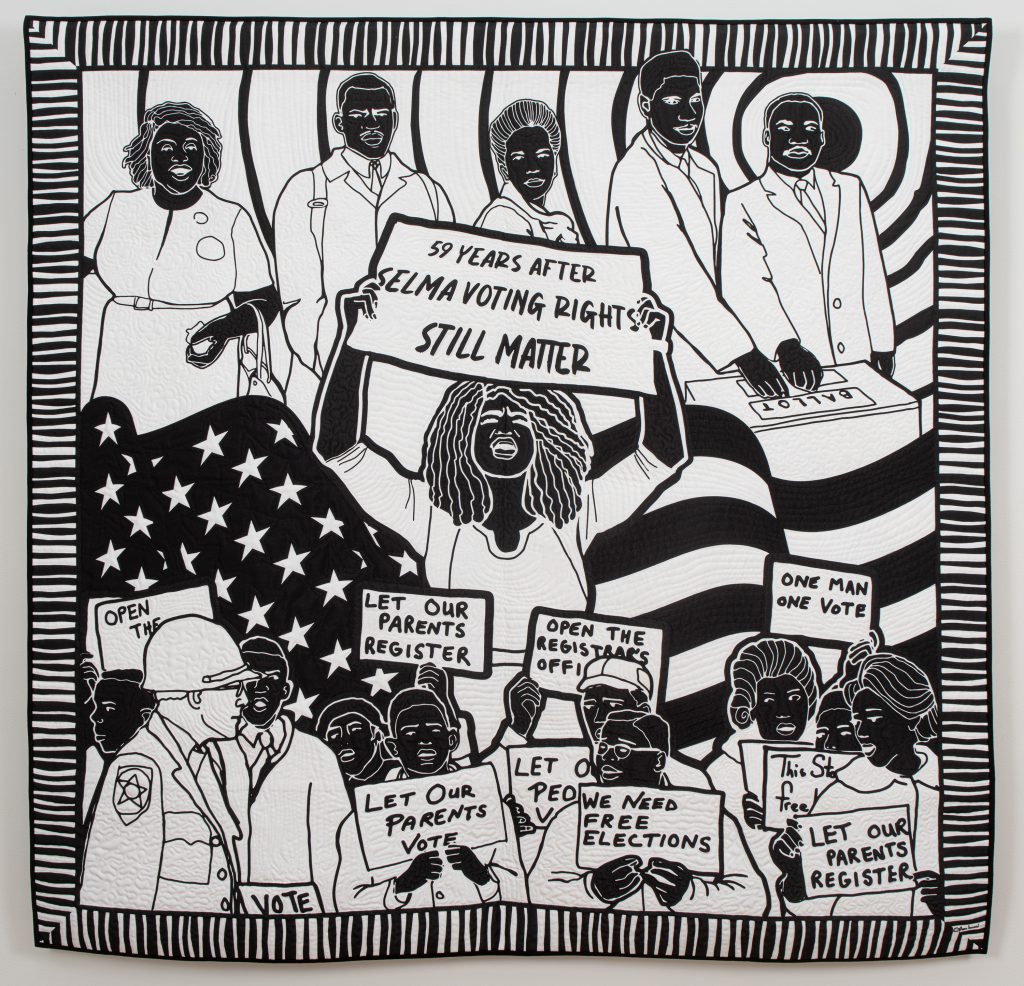
Carolyn Mazloomi, Voting Rights. Photo courtesy of Claire Oliver Gallery, New York.
Today, there are about 500 women in the group, down from 1,700 at its peak.
“That’s because most of them have passed away,” Mazloomi said. “Most of our members are between 76 and 104.”
Faith Ringgold, the great artist known for her narrative quilts, for instance, died in April at 93. Though Ringgold wasn’t a member of the network, Mazloomi was a friend, and the first owner of Ringgold’s famous piece Tar Beach (now at New York’s Solomon R. Guggenheim Museum), the sale of which put the younger artist’s three sons through college.
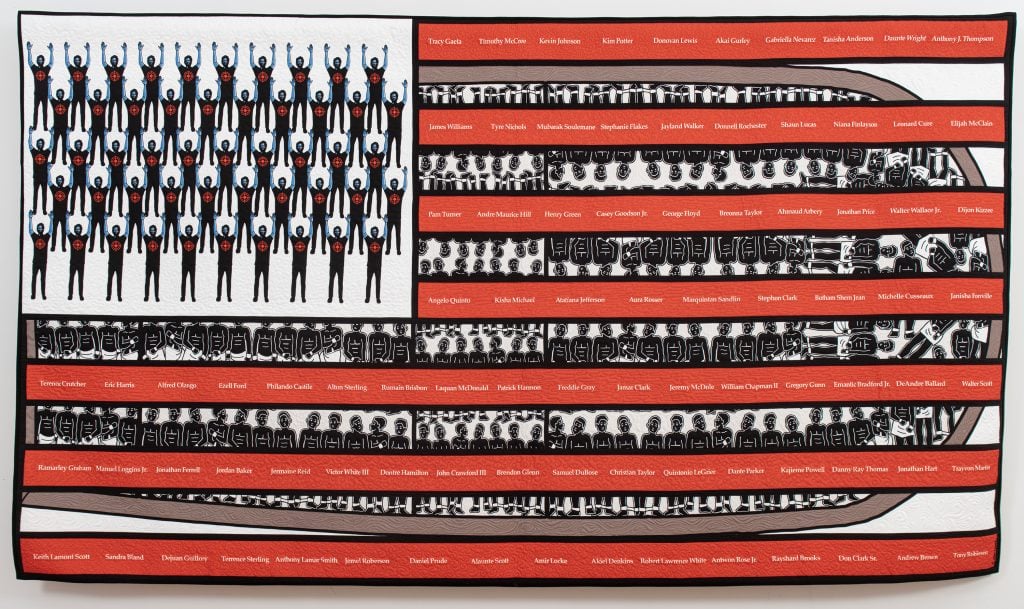
Carolyn Mazloomi, Hands Up … Dont Shoot #2. Photo courtesy of Claire Oliver Gallery, New York.
Mazloomi wishes the network had been more successful in passing along quilting techniques to the younger generation, but she understands why the labor-intensive practice doesn’t have more adherents.
“When you see how painstaking it is, it’s like birthing a baby. Making a quilt is so time consuming and intense,” she admitted. “But there’s no comparison as to how I feel when I finish making a quilt. I have put so much of myself into the actual making of it, so the making of quilt is a spiritual happening, and the completion of the quilt is an event.”
“Carolyn Mazloomi: Whole Cloth, Narratives in Black and White” is on view at Claire Oliver Gallery, 2288 Adam Clayton Powell Jr. Boulevard, New York, New York, September 3–November 16, 2024.